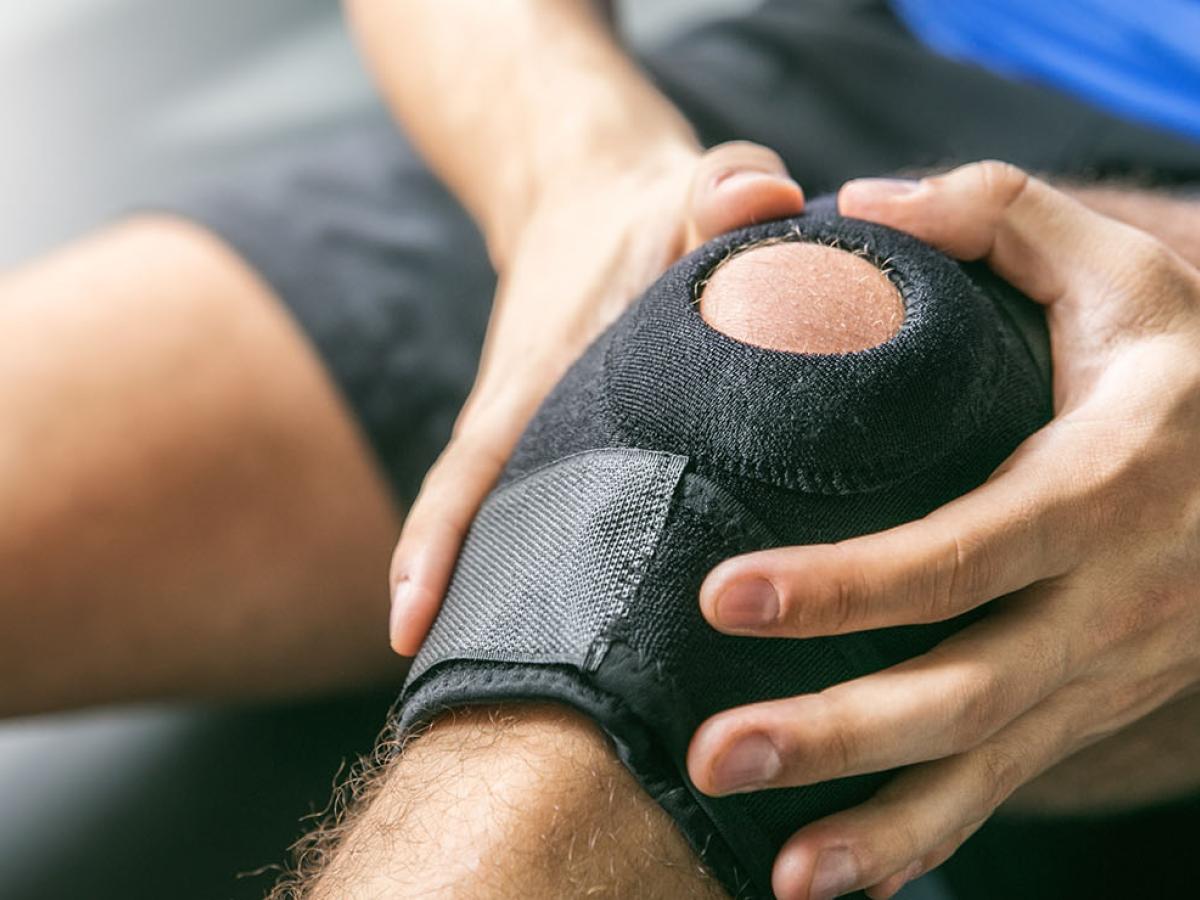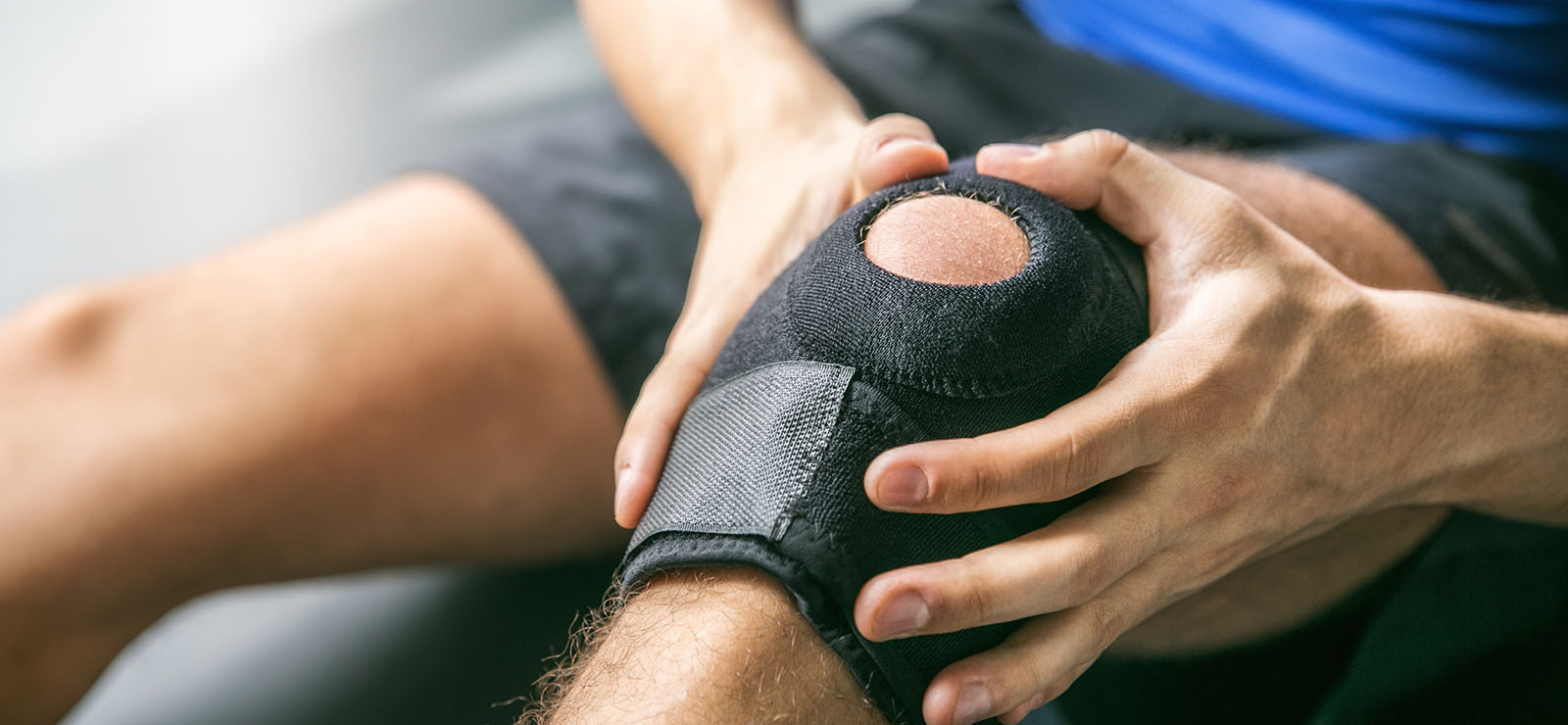November 27, 2023

The human body has amazing abilities. It can grow new life, heal its wounds and protect itself. In the past two decades, experts have realized the potential of your body’s blood, specifically platelet-rich plasma (PRP), as a healing tool for orthopaedic issues.
What Is Platelet-Rich Plasma (PRP)?
PRP is a substance made from your blood that contains a concentrated number of platelets, the cells that help your blood clot. These platelets also have proteins and growth factors that help repair injuries, encourage healing and improve how your tissue functions.
Creating PRP involves spinning a sample of your blood in a machine to separate the blood and pull out the platelets. “You sort out the blood to get a fluid rich in platelets,” says MU Health Care orthopaedic surgeon Dr. James Stannard. “That plasma is a cocktail of multiple different compounds, each of which benefits your body slightly differently.” PRP is then injected back into your body at the site requiring treatment.
PRP is not FDA-approved, but studies suggest it may help with:
- Osteoarthritis and joint pain
- Post-surgical recovery
- Sports injuries to tendons, muscles and ligaments
- Wounds

Dr. Stannard says one of the most common and effective uses for PRP shots is to relieve joint pain associated with early osteoarthritis (OA)— when the cartilage (cushioning) in your joints degenerates or gets worn down. “We know that PRP helps with the inflammation caused by joint deterioration and other orthopaedic injuries,” Dr. Stannard says.
But before you go searching for a PRP shot, Dr. Stannard shares essential facts you need to know — especially if you are considering PRP shots for joint pain:
1. Not All PRP Shots Are Created Equal
PRP is a cocktail of ingredients that benefit your health. But when you change the ratio and amount of those ingredients, the effects of PRP can change.
“PRP is a really broad term,” Dr. Stannard says. “The blood can be sorted in a few ways to make the plasma. One of the ways results in a plasma with a low white blood cell count (leukocyte poor). Another way gives you a high white blood cell count (leukocyte rich).”
Leukocyte-rich PRP is beneficial for some conditions, such as tendonitis. But it doesn’t provide the same effect when injected into an arthritic joint. Leukocyte-poor PRP, on the other hand, works well for OA. Choose a provider with PRP experience and expertise to ensure you get the proper treatment for your condition.
2. PRP Injections Are Not Stem Cell Injections
PRP contains a small amount of stem cells — cells found in your bone marrow and bloodstream that have a unique ability to recreate healthy tissue. But PRP shots are not stem cell injections.
“PRP does contain a few stem cells, so there may be some chance to regain cartilage,” Dr. Stannard says. “But right now, we don’t have the ability to take a stem cell, put it into a place like the knee and direct it to replace those potholes of missing cartilage.”
The hope, he adds, is that one day experts will learn how to control stem cells to resurface joints and repair joint tissue.
3. PRP Is a Natural Anti-Inflammatory
The most significant benefit of PRP shots for joint pain is their ability to decrease inflammation associated with OA. “Your joints include multiple different tissues that interact with each other, much like a symphony,” Dr. Stannard says. “If any of those tissues are inflamed, it affects the whole joint. PRP is like a big, wet blanket that douses that fire and calms the joint.”
But unlike oral and injectable anti-inflammatory drugs, PRP is all-natural and offers benefits such as:
- Avoiding detrimental side effects to other parts of the body like chemical inflammatory medicines
- Delivering all compounds right to the site without them traveling through your body and getting absorbed in your stomach or intestines
- Providing relief to the exact spot you need it
4. The Best Time to Get PRP Treatment Is Before Your Pain Gets Too Bad
The ideal time for a PRP treatment is when your joint and cartilage deterioration is early or mid-grade — you may have some pain, but there’s still enough cartilage there to keep bones from rubbing together.
“The treatment works best for someone who still wants to be active but has maybe worn their knees out a bit,” Dr. Stannard says. OA of the knee affects more than 10% of adults over 60, but “PRP shots are not necessarily an age thing. It’s more about being active and wanting to maintain your knees or other joints as long as possible.”
5. PRP Works Differently for Everyone
PRP injections don’t offer immediate relief, so setting your expectations is important. How well you respond, how quickly the relief kicks in and how long it lasts may depend on:
- Degree of deterioration
- Genetic make-up
- Underlying cause of the condition
- Weight and physical health
Your response to a PRP shot may range from no change to almost complete relief. If you have a partial response, you may need a second injection shortly after the first.
“Some people just don’t respond to PRP,” Dr. Stannard says. “But if you get an excellent response, we’ll wait until you aren’t doing as well again before we do another. The average time between shots in our practice is typically around nine months.” The best time to repeat a successful PRP treatment is when the joint is starting to bother you again, but the pain is not yet out of control.
6. PRP Injections Are Not a Permanent Fix
PRP shots may relieve inflammation and slow down the deterioration of your joint cartilage. But they won’t stop the process altogether or help rebuild cartilage. PRP injections should be just one piece of a treatment plan.
“Any time you’re dealing with a joint that is wearing out from aging or an injury, the joint is no longer normal,” Dr. Stannard says. “You must look at the joint from all angles to solve the underlying problem.”
An orthopaedic specialist will likely try to determine:
- Is the joint stable? Stabilizing the joint decreases your risk of further injury or deterioration.
- Is the joint in line? If not, it can cause added pressure and should be realigned.
- Is there adequate shock absorption? If you are young and/or active enough, you may be a candidate for a meniscus or tissue transplant.
- How much weight is the knee managing? The knee can carry up to eight times your body weight when walking down stairs. Being at a healthier weight can relieve a lot of the pressure on your knees.
The good news is that an orthopaedic doctor can address underlying joint issues and refer patients to specialized weight loss programs, such as MU Health Care’s Joint Health Program. Those programs combine exercise plans and expert dietary guidance focused on improving joint health.
Next Steps and Useful Resources
- Want to discuss more with a doctor? Find one today.


